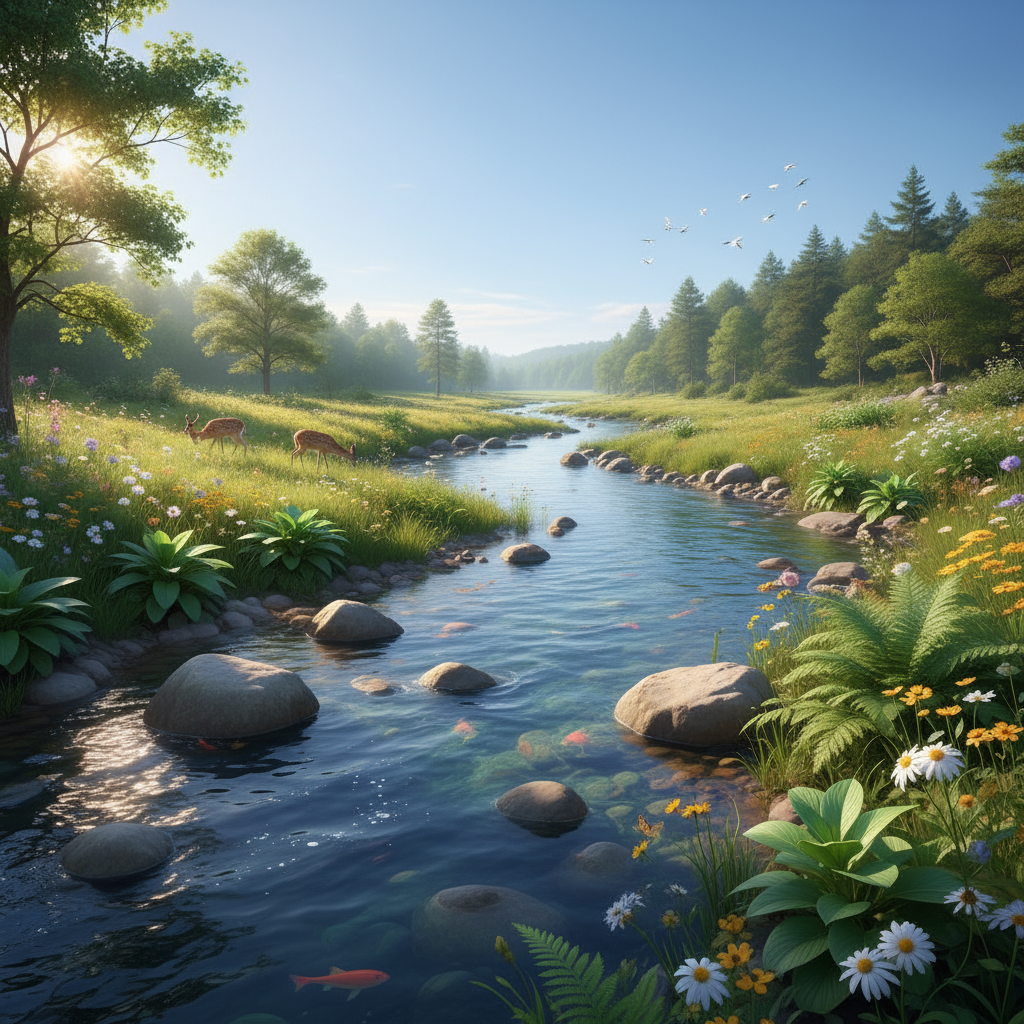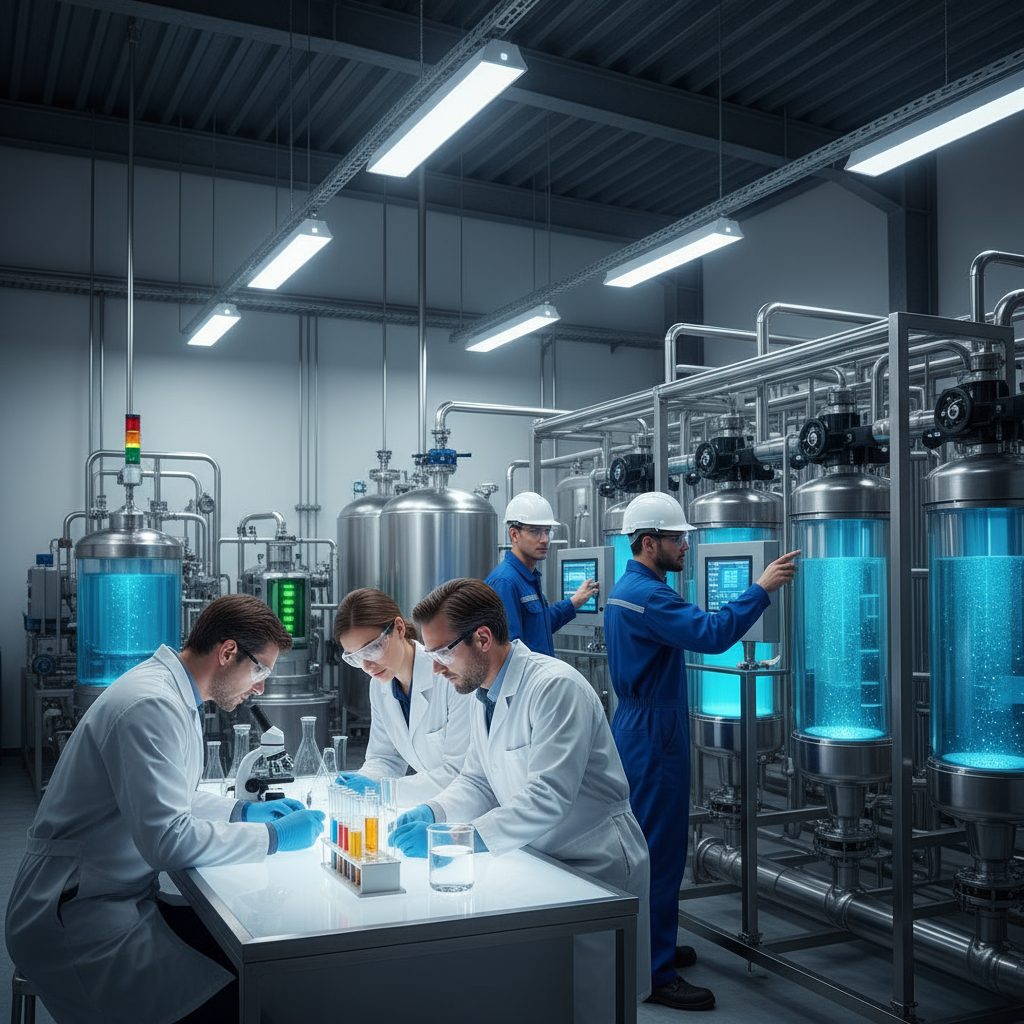
Table of Contents
Introduction
Water is life itself. But here’s the harsh reality—our most precious resource is under attack from pollution like never before. Ever stopped to think about what’s actually floating around in the rivers, lakes, and oceans we depend on? Those invisible contaminants aren’t just harming fish and plants. They’re affecting us too, compromising our drinking water and threatening entire ecosystems. The good news? We can do something about it, and this guide will show you exactly how.
So what exactly is water pollution? It’s when harmful stuff—chemicals, waste, bacteria, you name it—gets into our water bodies and wreaks havoc on both nature and human health. The sources are everywhere: factories dumping runoff, farms using too many chemicals, sewage that isn’t properly treated, and all that plastic we throw away. Here’s a sobering fact that might surprise you: contaminated water kills over 1.8 million people worldwide every year through waterborne diseases. That’s not just a statistic—that’s 1.8 million families affected by something we can actually prevent. Once you understand where these pollutants come from, you can start fighting back. And speaking of fighting back, learning about sustainable agriculture techniques can be a real game-changer since farm runoff is one of the biggest culprits when it comes to water contamination.
Now, tackling water pollution means looking at the bigger picture. Take the fashion industry, for example—bet you didn’t know it’s one of the worst water polluters on the planet. From cotton production to textile dyeing, the clothes we wear have a massive water footprint. That’s why understanding sustainability in the fashion industry matters more than you might think. Your shopping choices really do make a difference. On the flip side, technology is giving us some amazing tools to fight back. The latest green technology innovations are literally transforming how we clean water and prevent pollution at its source. It’s pretty incredible what we can accomplish when science meets determination.
But you know what really excites me? The power of community action. Simple projects like rain gardens can work wonders for managing stormwater runoff—one of the sneakiest sources of water pollution. Before rain hits our rivers and lakes, these gardens naturally filter out contaminants. Want to try it yourself? Check out this guide on how to build a rain garden and see how easy it can be. Community gardens are another fantastic way to get involved while reducing urban runoff. Learning how to start a community garden not only brings neighbors together but also creates green spaces that naturally improve local water quality. These grassroots efforts prove that when communities work together, real change happens.
What You’ll Learn in This Guide
Ready to become a water pollution fighter? This guide breaks everything down into actionable steps, whether you’re passionate about the environment, leading community efforts, or just want cleaner water for your family.
- Understanding Water Pollution: Learn what water pollution is, common contaminants, and the principal sources affecting our water bodies.
- Effective Reduction Methods: Discover various water treatment and cleanup techniques along with innovative green solutions transforming water management.
- Community and Individual Actions: Practical tips on how industries, communities, and individuals can contribute to cleaner water through sustainable practices and responsible behaviors.
- When to Seek Expert Help: Guidance on recognizing severe contamination issues and knowing when professional intervention becomes necessary for water safety.
We’re going to tackle this challenge from every angle—the science behind it, the practical solutions that actually work, and the role each of us can play. Because here’s the truth: protecting our water isn’t just an environmental issue. It’s about securing the future for everyone.
Coming up, we’ll explore where water contamination actually comes from. You might be surprised to learn how industrial activities, farming practices, and poor waste management create the problems we’re dealing with today. Then we’ll get into the solutions—proven water treatment methods that use both biological and chemical processes to restore water quality. We’ll also cover the everyday actions that make a huge difference, plus the cutting-edge technologies that are pushing sustainability forward. And if you’re ready to go beyond individual action? We’ll cover when and how to bring in the experts for serious contamination issues.
Throughout everything we discuss, you’ll see how concepts like sustainable agriculture techniques and rain garden implementation connect directly to reducing water pollution. These aren’t just nice-to-have environmental practices—they’re powerful tools for protecting our water resources. When we embrace these approaches, we’re not just solving today’s problems. We’re building a healthier world for future generations.
By diving into this guide, you’re joining a movement of people who refuse to accept polluted water as inevitable. Together, we can turn things around and ensure that clean, safe water remains available for all life on Earth. Let’s get started.

We’ve covered the basics of water pollution, but now it’s time to dig deeper. Here’s the thing—water pollution isn’t just some abstract environmental problem we read about in the news. It’s happening right now, affecting the water we drink, the fish we eat, and the ecosystems our kids will inherit. When we really understand what causes it and learn how to spot the warning signs, we can actually do something about it. And that matters more than you might think.
Understanding Water Pollution and Its Primary Causes
So what exactly is water pollution? Simple—it’s when harmful stuff gets into our rivers, lakes, oceans, and groundwater, making them unsafe for both people and wildlife. We’re talking about industrial chemicals, farm runoff loaded with pesticides and fertilizers, untreated sewage, plastics, and all sorts of nasty materials. Each one messes with water in its own way, changing everything from how it looks to what lives in it. Want to see how we can fight back? Check out these sustainable agriculture techniques that seriously cut down on farm runoff—one of the biggest culprits out there. When communities know where pollution comes from, they can actually prevent it. Pretty powerful stuff.
But here’s where it gets complicated. Pollutants don’t just politely enter water systems one at a time—they come from everywhere. Factories dump toxic metals and chemicals that stick around for years, poisoning fish and making people sick. Farms? Their fertilizer runoff feeds algae blooms that suck all the oxygen out of water, killing everything in sight. Untreated sewage brings bacteria and viruses that make water downright dangerous to touch, let alone drink. Then there’s plastic waste and chemical contaminants that just keep building up, creating problems we’re still trying to understand. The reality is, we need to tackle all these sources at once if we want real change.
Key Aspects of Water Pollution
Let’s break down what we’re dealing with here. Understanding these different types of pollution helps us know exactly what we’re fighting:
- Industrial Contaminants: These are the scary ones—toxic metals, solvents, and chemicals that factories release. They don’t just disappear; they stick around and build up in fish and other animals. Eventually, they end up affecting us too. If you want to see what regular people can do about this, these practical steps to reduce water pollution show how we can push for better industrial practices and treatment systems.
- Agricultural Runoff: Picture this: rain hits a fertilized field and washes all those nutrients straight into nearby water. Sounds harmless, right? Wrong. All that extra nutrition feeds massive algae blooms that choke out everything else. The good news? Farmers are learning techniques like contour farming and buffer strips that keep their soil (and fertilizer) where it belongs.
- Sewage and Wastewater: When sewage isn’t properly treated, it brings bacteria, viruses, and organic waste that can make people seriously ill. Plus, it throws off the natural balance that keeps aquatic ecosystems healthy. Better treatment technology is making a real difference here.
- Plastic and Chemical Pollution: Plastic doesn’t just disappear—it breaks down into tiny pieces that animals mistake for food. Add in pharmaceuticals and personal care products that our current treatment systems can’t fully remove, and you’ve got a complex mess that requires some creative solutions.
Once you understand these different pollution sources, everything starts making more sense. You can see why environmental policies focus on specific problems and why community actions need to be targeted to work. This knowledge is what leads us to the next step—finding solutions that actually work.
Proven Methods to Reduce Water Pollution and Promote Cleaner Water
Now for the good news—we’ve got some serious tools to fight water pollution. Modern treatment systems use filtration, settling tanks, and biological processes that literally eat pollutants. Engineers are getting creative too, using everything from chemical treatments to natural wetlands that clean water while providing habitat for wildlife. And speaking of innovation, green technology innovations are opening up entirely new ways to balance what humans need with what the environment can handle. It’s pretty exciting stuff.
But here’s what really makes the difference—getting everyone involved. When industries face strict rules and regular monitoring, they invest in cleaner technology and actually change how they operate. Communities that organize cleanup days and support eco-friendly farming practices? They create a ripple effect that goes way beyond what any one person could do alone. It’s about building that sense of shared responsibility where everyone feels like they have a stake in keeping our water clean. Knowledge sharing and community action—that’s where the real power is.
Effective Strategies for Water Pollution Reduction
Here are the methods that are actually making a difference right now:
- Advanced Water Treatment Techniques: Think of these as the heavy hitters. Filtration systems trap particles you can’t even see, while biological treatment uses helpful bacteria to break down organic pollutants naturally. Chemical treatments neutralize the really nasty stuff. The technology keeps getting better, and it’s fascinating to see how effective these systems can be when they’re properly designed and maintained.
- Wetlands for Natural Filtration: Nature’s own water treatment plant. Wetlands trap sediments, absorb excess nutrients, and provide homes for wildlife—all while cleaning our water for free. Whether they’re natural or human-made, these ecosystems are incredibly effective. Plus, restoring wetlands helps with flood control and climate resilience too.
- Industrial Regulation and Monitoring: This is where the rubber meets the road. Strong regulations with real enforcement dramatically reduce toxic discharges. Regular monitoring catches problems early and keeps companies accountable. When businesses know they’re being watched, they tend to make much better choices.
- Community Engagement and Cleanup Efforts: Never underestimate the power of people who care. Community cleanup days, educational campaigns, and local advocacy don’t just remove trash—they change how people think about water protection. These grassroots efforts often inspire policy changes and push businesses to be more responsible. When neighbors work together, amazing things happen.
The shift from understanding pollution to actually solving it shows just how important both technology and community involvement really are. But don’t forget—individual actions matter too, and sometimes you need to call in the experts when you’re facing stubborn or complex pollution problems in your area.

Water pollution is messy, complicated, and honestly? It’s one of the biggest challenges we’re facing today. But here’s what we’ve learned together: this problem has real solutions. We’ve covered the main culprits—industrial waste, farm runoff, untreated sewage, and all that plastic floating around. When you spot foul smells, weird colors in water, or fish dying off, that’s nature sending an SOS. The good news? We know how to respond.
Science gives us some pretty amazing tools. Advanced treatment systems, biological processes, even natural wetlands can work like giant water filters. It’s incredible how nature and technology can team up to clean things up. But here’s the thing—tech alone won’t cut it.
Communities and industries have to step up too. That means stricter rules for factories, smarter farming practices, and yes, getting our hands dirty with cleanup efforts. And you? Your daily choices matter more than you think. Toss that plastic bottle in recycling instead of the trash. Switch to eco-friendly cleaners. Fix that leaky faucet. Small stuff adds up fast.
When things get serious—like if you notice persistent contamination or health issues—don’t try to handle it yourself. Call in the experts. Your health and your community’s wellbeing are worth it.
So what’s next? Now that you understand how complex (and solvable) water pollution really is, let’s keep building on that knowledge. Want to tackle one of the biggest pollution sources? Check out sustainable agriculture techniques that can dramatically reduce harmful runoff. Curious about cutting-edge solutions? Dive into green technology innovations that are completely changing how we manage water. And here’s something you might not expect—sustainability in the fashion industry has a huge impact on water systems worldwide. Finally, since energy production affects water quality, learning about ways to save energy at home rounds out your environmental toolkit nicely.
Look, cleaning up our water isn’t something we can dump on someone else’s shoulders. It takes all of us—governments, businesses, communities, and individuals like you. But you’re not powerless here. Every choice you make, every habit you change, every conversation you start about this stuff matters. We can absolutely protect our water resources for the next generation. It starts with people like you deciding to care—and to act.
Frequently Asked Questions
-
What are the most common causes of water pollution?
- Industrial waste, agricultural runoff, untreated sewage, and plastic contaminants are the primary contributors to water pollution worldwide.
-
How can individuals help reduce water pollution?
- By properly disposing of chemicals and waste, reducing plastic use, conserving water, and choosing eco-friendly products, individuals can significantly lower water pollution.
-
Are there natural ways to clean polluted water?
- Yes, natural wetlands and biological treatment processes utilize natural mechanisms to filter and reduce pollutants effectively.
-
When should I contact a professional about water pollution?
- If you notice unusual contamination levels, persistent pollution sources, or health issues linked to water quality, it’s time to seek expert help.
-
Can water pollution be completely prevented?
- While it is challenging to eliminate completely, most water pollution can be prevented by adopting responsible practices, regulations, and community efforts.
